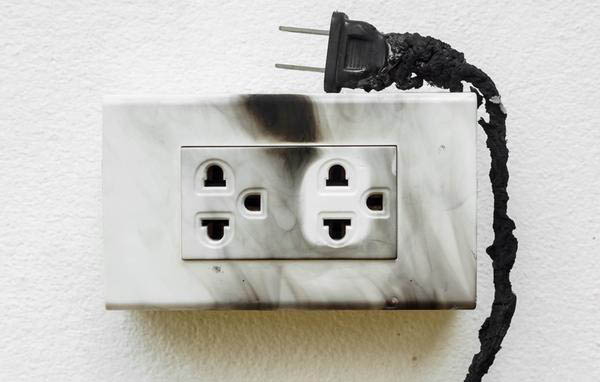
Power surges and their protection
Power surges can damage electrically sensitive modern-day electronics and appliances. To prevent losses resulting from these surges, you will need to install surge protective devices in your property.
What are power surges?
They are sudden spikes of very high voltages that flow in circuits for a short time. In Nepal, the operating voltage in typical households is 230V and that in commercial buildings, industries is 400V. But sometimes, the voltages can reach a very high level, up to thousands of volts.
These voltages or surges last for microseconds (1/1000000 of a second) to milliseconds (1/1000 of a second) only but can have damaging effects. Surges can travel between any power lines coming into your property. Sometimes they even travel through telephone, TV and internet cables.
Causes of power surges
The major causes of power surges are switching and lightning.
Switching surges are the most common. At the time of switching devices with motors such as refrigerators, air conditioner, elevators or water pumps on or off, they demand a large amount of energy. As a result, they create surges in the circuit.
In the case of lightning, not only direct strikes to your property but also on distribution cables and indirect or proximal strikes can initiate power surges.
Damages from power surges:
Although power surges existed since the advent of electricity supply, they became a serious concern only recently. That is due to the use of semiconductors in modern devices which are electrically sensitive materials.
Computers, mobiles, LED lights and most other electronic devices use components made of semiconductors. Even appliances like ovens, heaters these days use semiconductors for programmed operations.
There is a high chance that you have experienced the effects of surges. For instance, some of your electronic devices suddenly stopped working, but there was no sign of damage. Or, some of the appliances were not functioning after your power supply was back from interruption due to lightning.
Similarly, you had installed good quality LED lights, but they failed prematurely. These circumstances must have occurred due to one or more power surges.
Surge Protection Devices (SPD)

Surge protection devices guard electrical circuits against the damage of power surges. When there is a surge, they divert the supply away from the protected region and make it pass through them instead. As a result, the components will not experience a high voltage.
There are various steps to check and calculate if you might need SPDs for your property. But the simple rule of thumb is that, if buying a surge protector would cost you less than the potential losses resulting from power surges, you should install them.
Sometimes, there can be a loss of important information or even life to which we cannot give value in terms of money. In these cases, you must have your property surge protected.
There are three classes of SPDs made for varying requirements:
Class I
They can handle large surge voltages. If your property has a lightning protection system or an overhead supply, you will need to install this class of SPD.
Class II
If Class I SPDs are not required, but there is a risk to humans, industrial activities or public services, then you will need to install this class of SPD.
Class III
If protection of your whole property is not necessary, except for a few electronics, you can use Class III SPDs with those specific items.
Under some situations, you may also need to install two or all three classes of SPDs. To accurately select and install SPDs and also to assess whether you will need them in your property, call an engineer or company with the expertise on this job.
- Surge, the silent killer of Lights and Appliances - June 28, 2020
- Know the details of Lightning protection in buildings - June 15, 2020


